
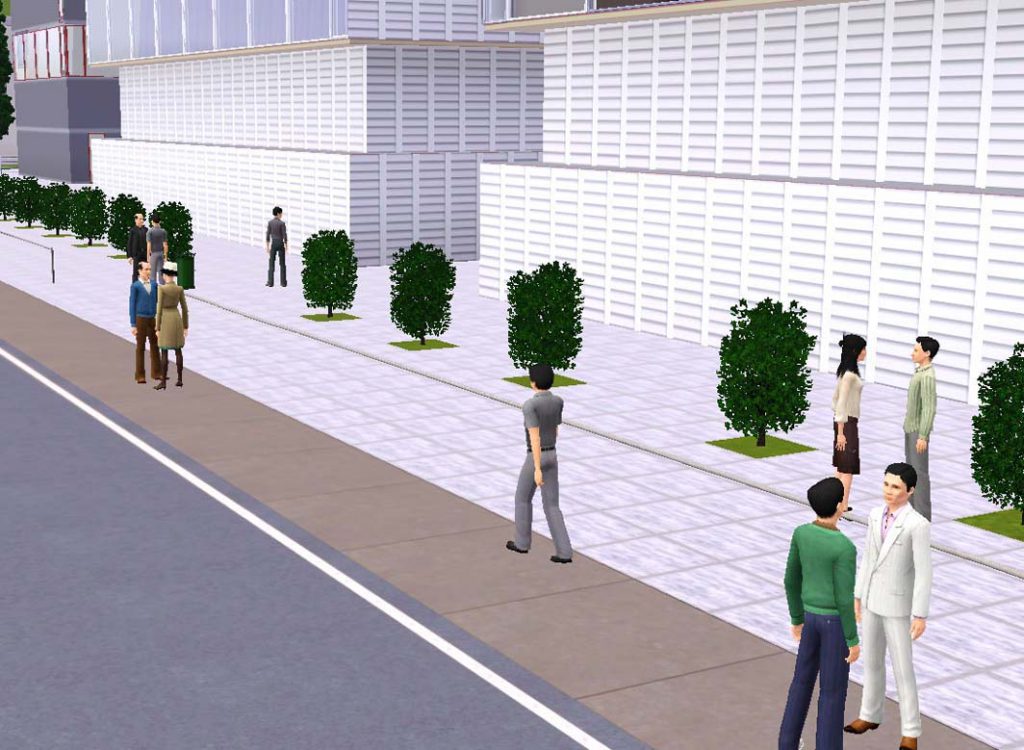

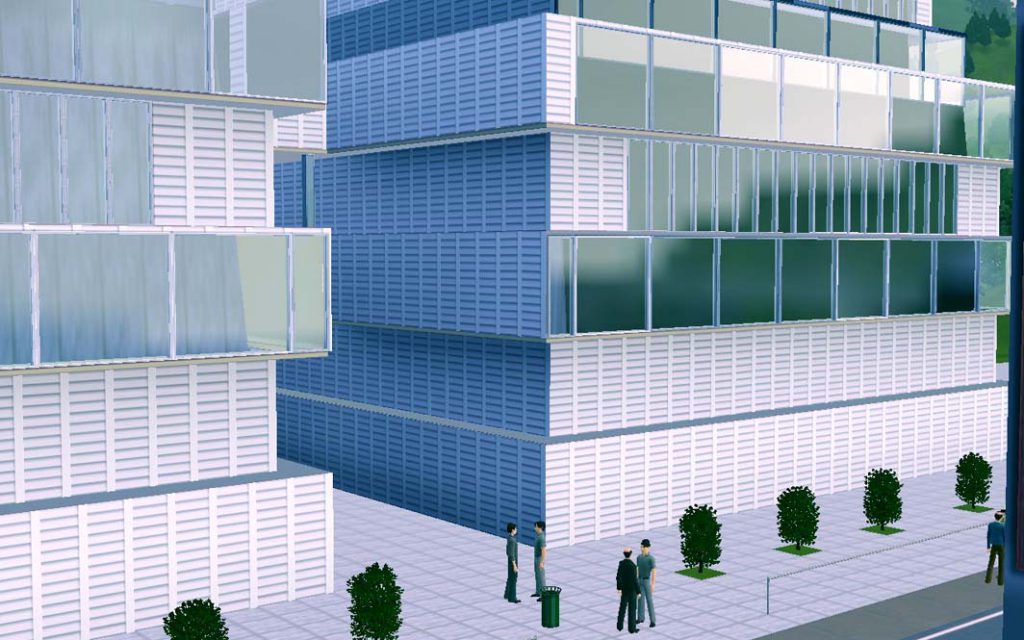
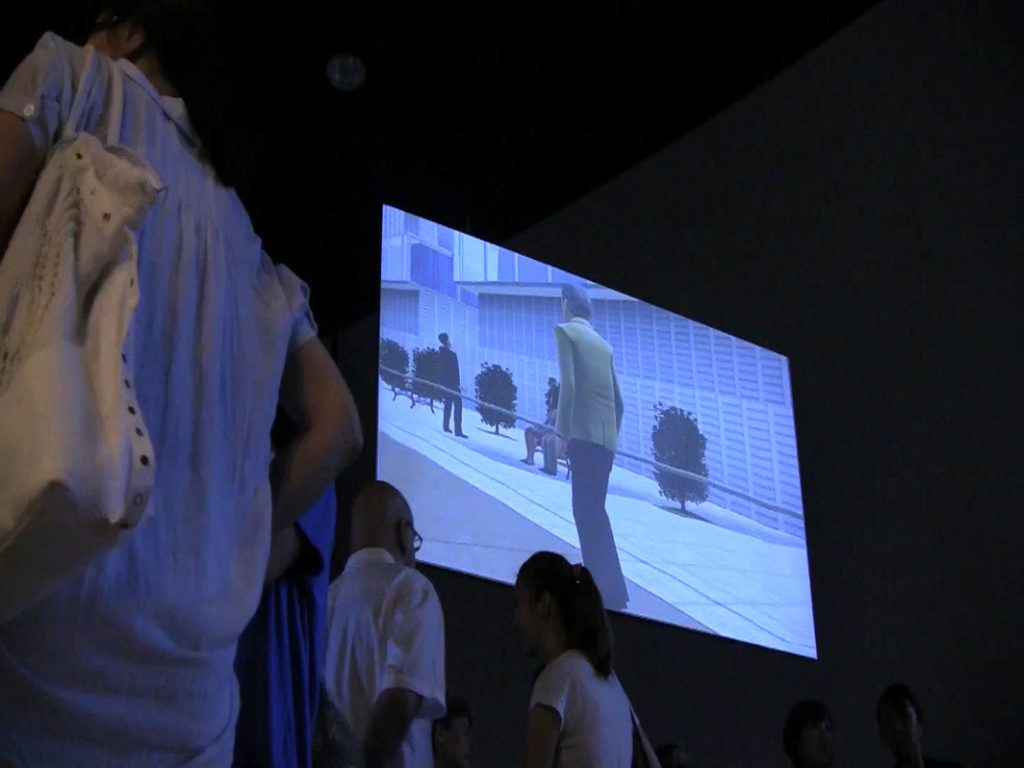
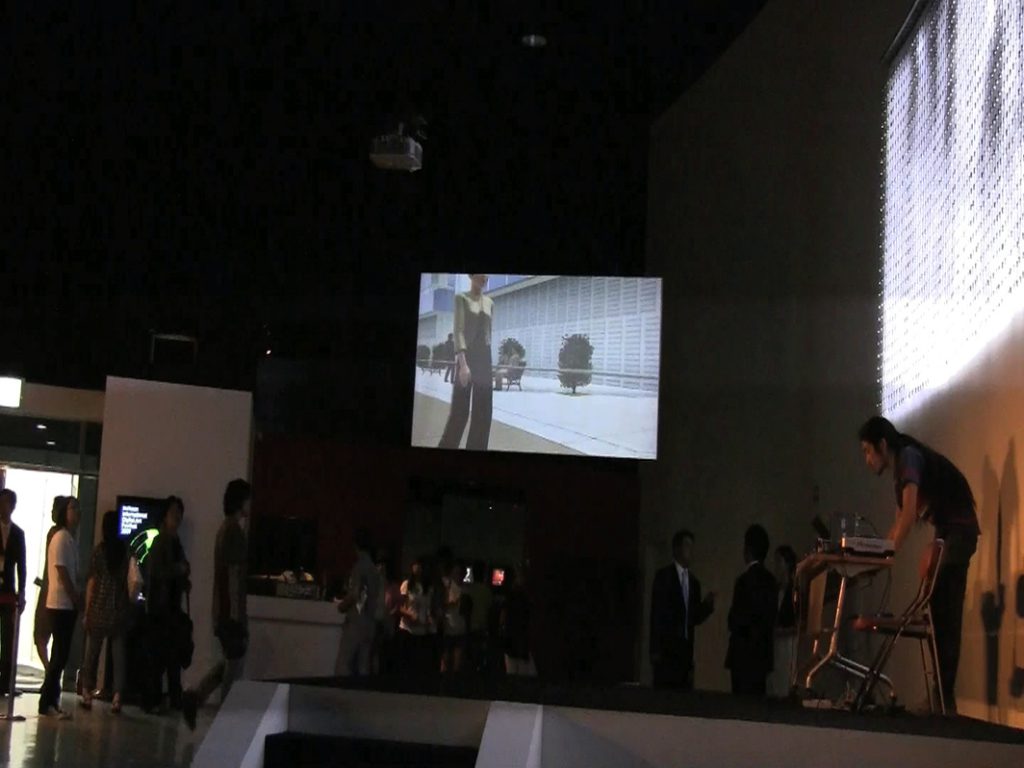
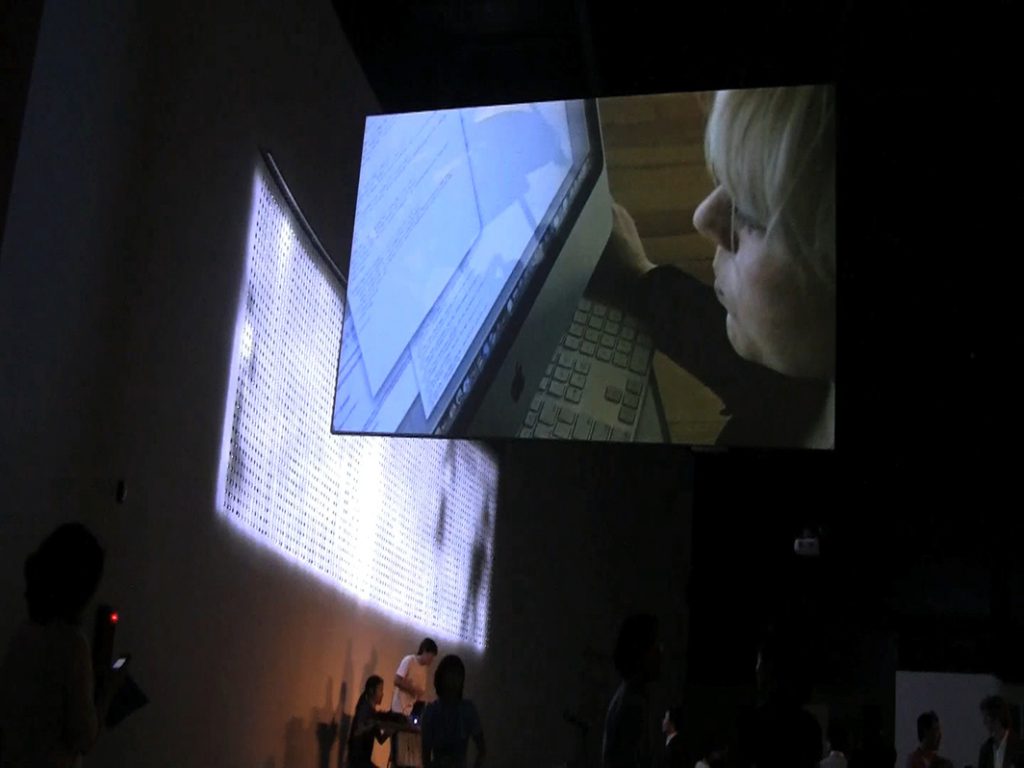
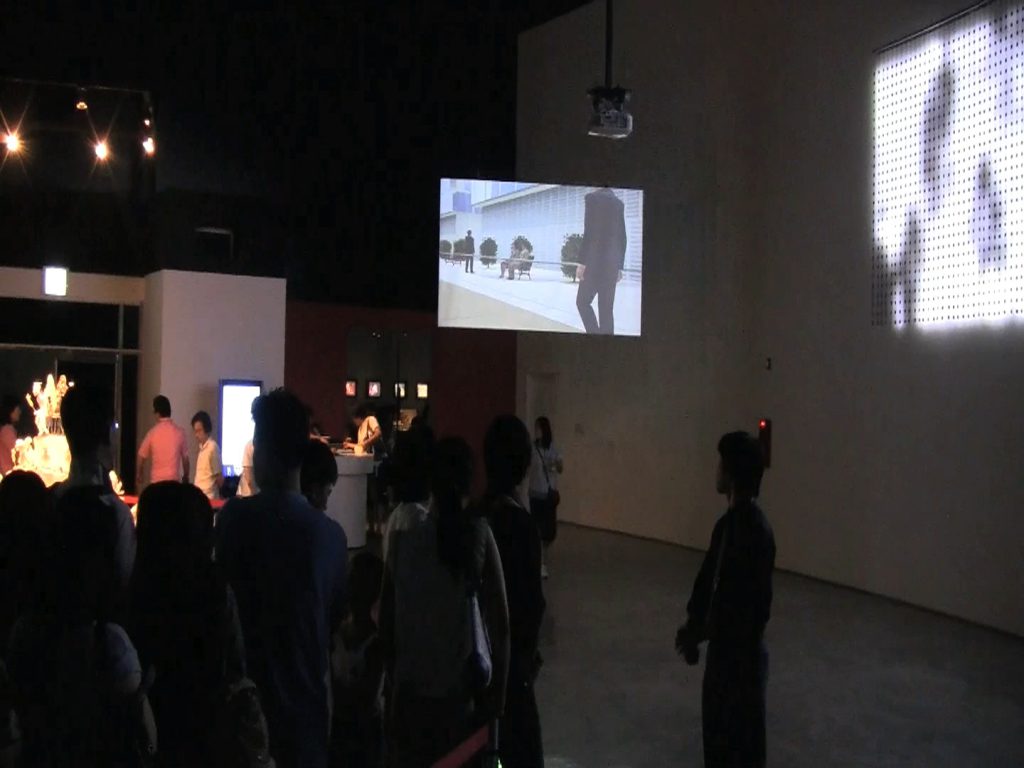
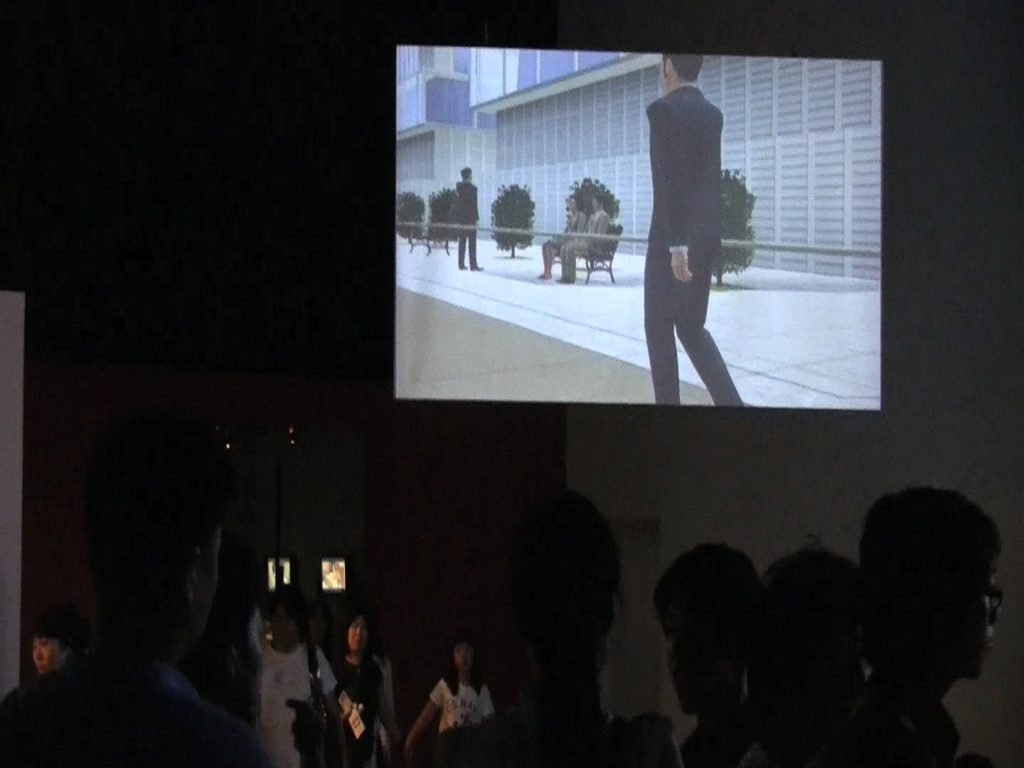

Video
[perfect.city]
2 channel video
dimensions variable
2009
[perfect.city] is an exploration of the South Korean city of Songdo, a planned international metropolis developed by corporations (Gale International, with a technological infrastructure by technology companies). The city is designed to be perfect: plans call for the elimination of social ills, care-free living, and happiness for all citizens—in fact, plans in the form of 3D building models were input into Google earth before the city was built. In my work, I first explored this “virtual” city, and wanted to model what this “perfect city” would be like for people. To do this, I took the models, translated them into buildings in the popular computer game The Sims 2, populated the city with virtual inhabitants with their own personalities and characteristics. Volia! The [perfect.city] became functional before New Songdo was actually built.
During the construction of the city atop a giant landfill south of Seoul, ubiquitous technology was considered a “feature” of the planned infrastructure. Since, concerns over an all-knowing, “Big Brother style” technological infrastructure have been raised. As a corporate venture, public space in New Songdo will be privatized. What effect will this have on people’s private lives? “We will build in all this functionality,” answers Catherine Maras, Microsoft’s Director of Worldwide E-Government who is involved in the Songdo project. “Really it’s opt-in or opt-out. Whatever the citizens want to make their lives easier.”
Songdo is not the first Utopian city; Brasilia is one of many another examples, which at its completion in 1960 promised a utopian experience of a redesigned city specifically for the modern lifestyle. Inevitably, utopian visions are met with the mundane realities of living inside these ‘golden dreams’. Today, Brasiliense families manifest their rejections of utopian design by reasserting familiar values, concepts and conventions of urban life. Songdo may function in a similar way.
[perfect.city] is a 2-channel video installation consisting of a large double-sided projection screen.
One side of the screen alternates between live-action footage of the artist recreating the design process of the city, scrubbing backwards and forwards through time, mixed with a time-lapse recording of the planning and construction of the virtual city. This video component mimics a documentary style look at “the making of” New Songdo.
On the opposite screen is the slow motion city in action as developed in The Sims 2. The people are a population wandering aimlessly to and from virtual jobs, or sitting on park benches, aimless. All are well dressed. All are clean and tidy. They walk amid a bland and featureless urban street-scape. This future city is unattached to history and the somnambulistic quality of the pedestrians point to the weary, stale, and unprofitable experience of techno-utopianism.The featureless city streets depicted call into question the all too brief period and limited input from non-corporate entities devoted to planning the city.
In [perfect.city] I explore the use of technology in everyday settings and how it both reflects and creates phenomenological experiences. These experiences are interdependent, symbiotic and create meaning in a mutual fashion. In depicting the role of ‘planner and developer’ in [perfect.city], I embody and perform the process of creating utopic visions, where dreams pass into action and back again. Though these cycles are complex, the work minimizes the aesthetics to feature the beauty of the mundane: both on the programming side, and within the everyday life that a future utopia would present.
Exhibitions
- Small World Exhibition, Southend-on-Sea, UK, 2010
- Incheon Digital Art Festival, New Songdo, South Korea, 2009